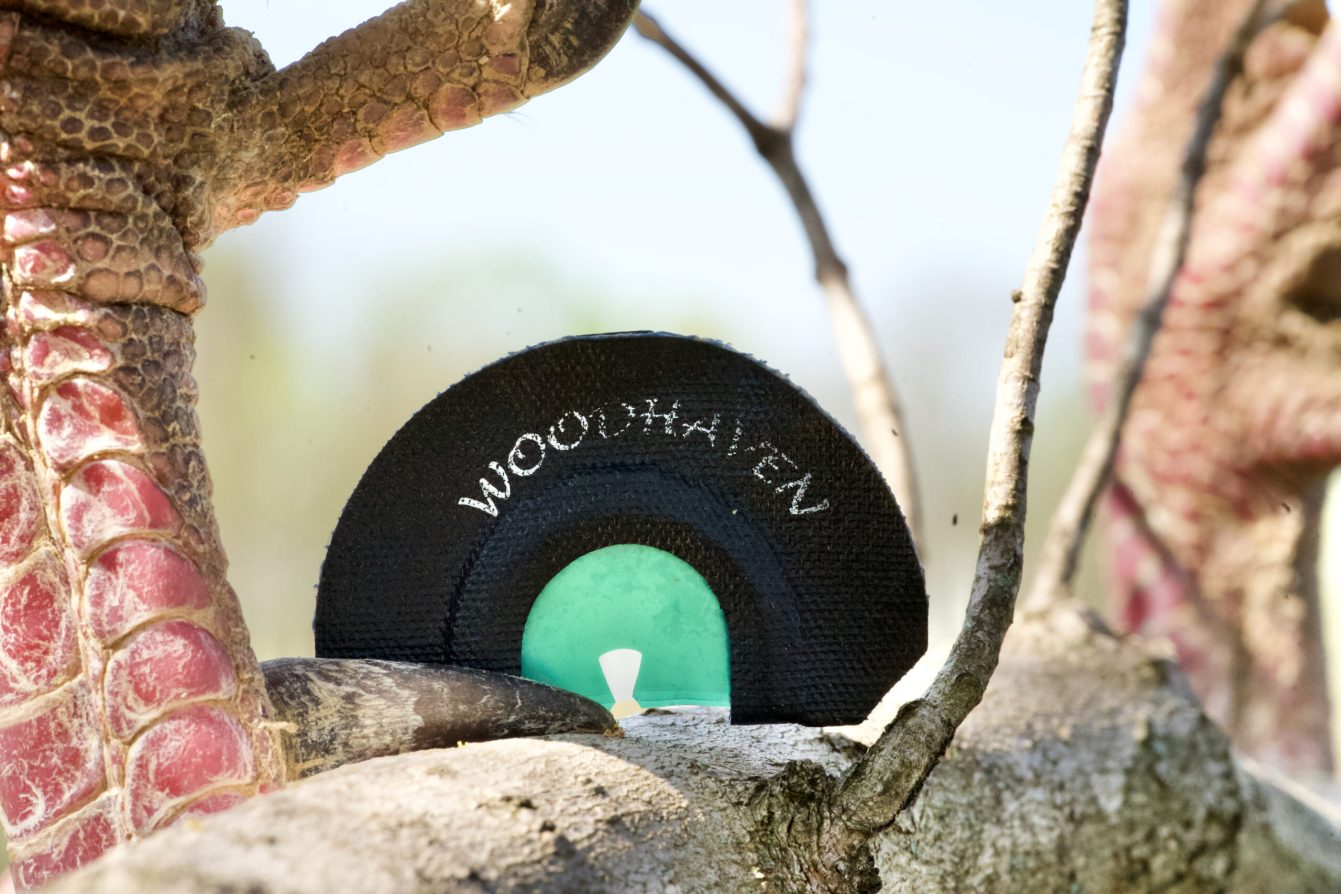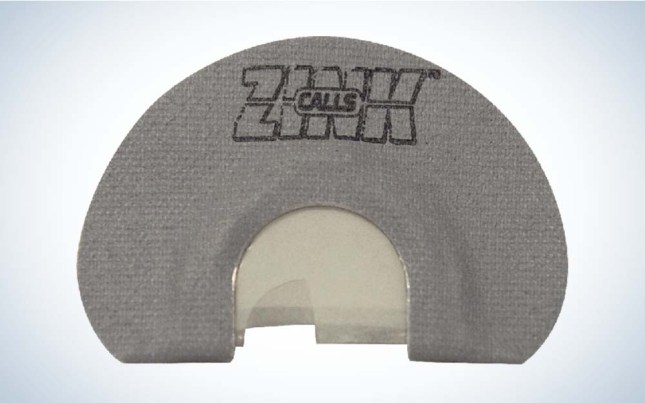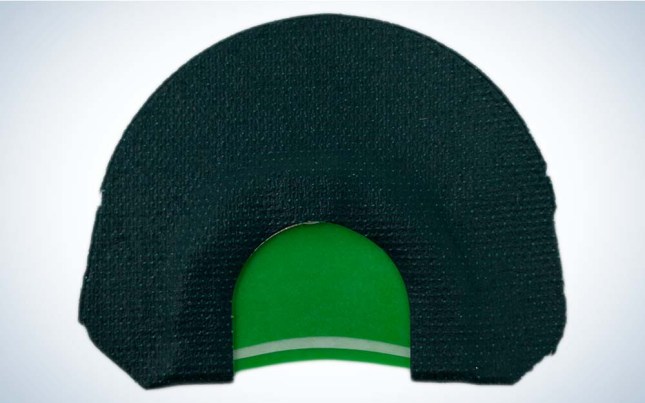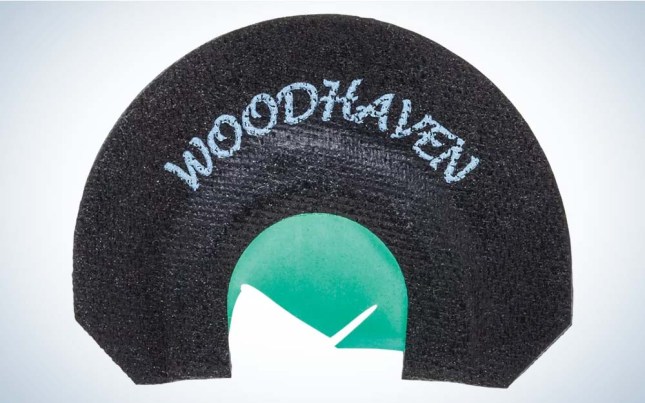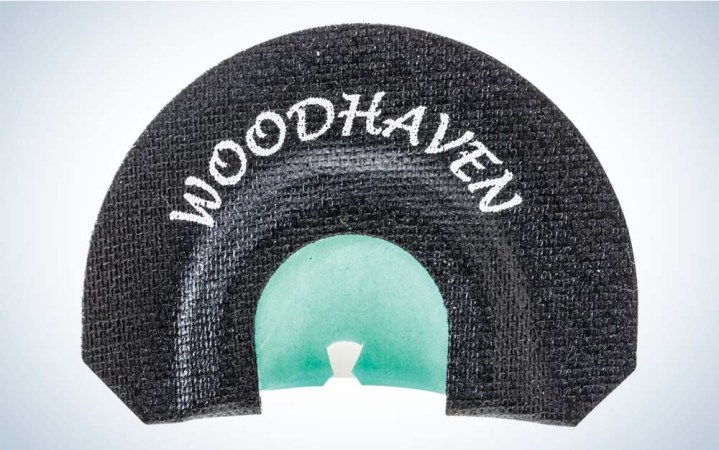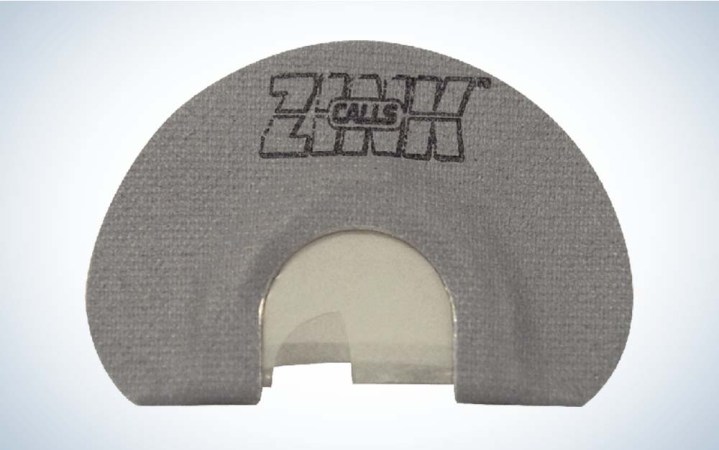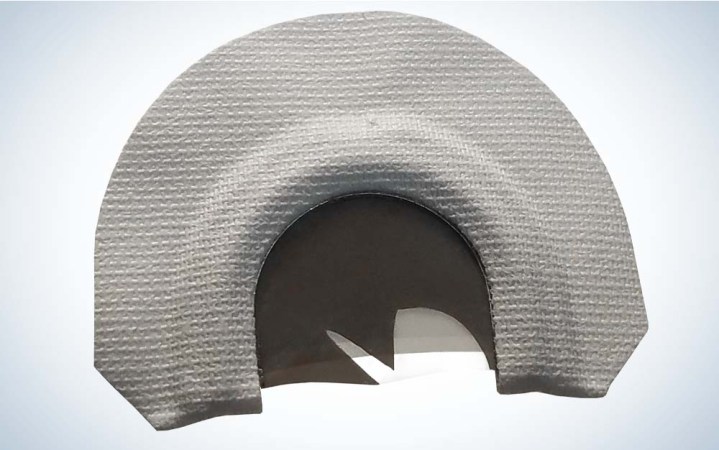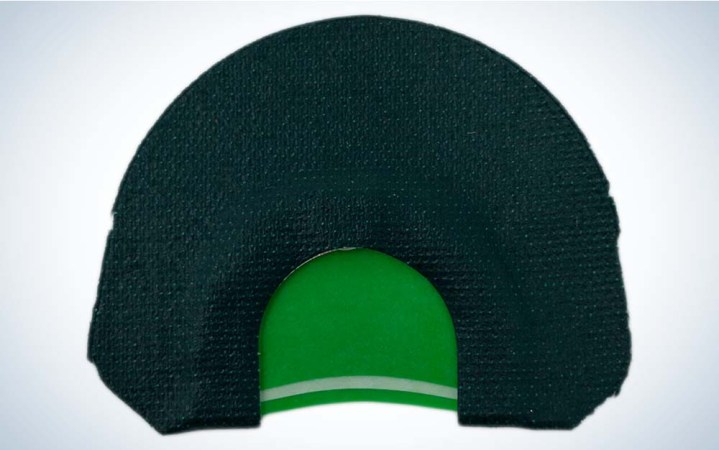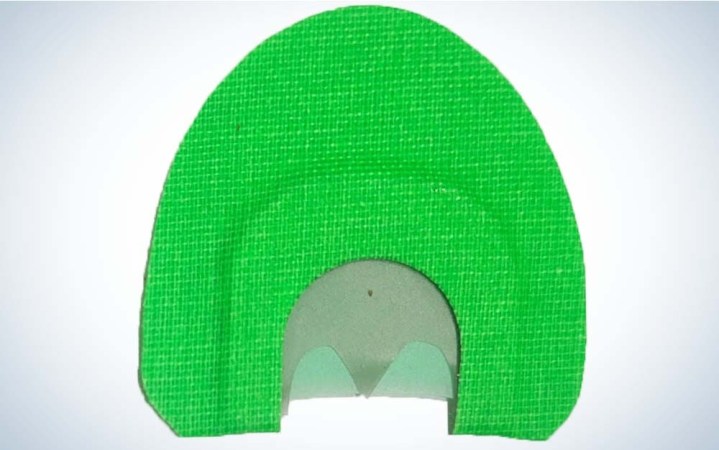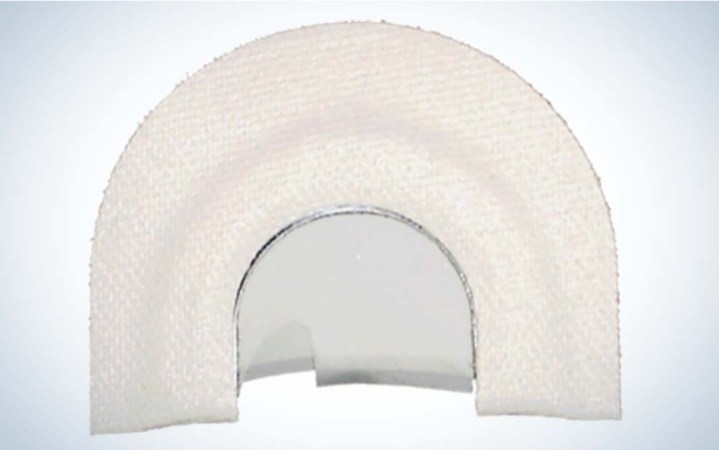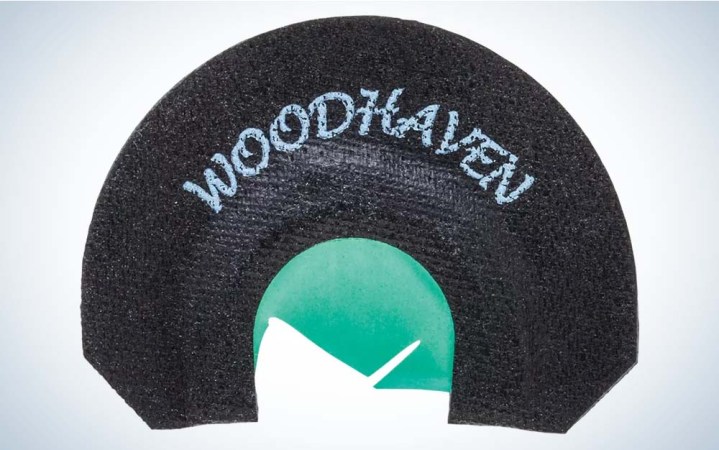We may earn revenue from the products available on this page and participate in affiliate programs. Learn More ›
You’ve probably heard stories about turkeys that gobble at rusty gates, slammed truck doors, and even gunshots. While these anecdotes might spark fascination among turkey hunters, I don’t know anyone who’s called in a gobbler with their pickup and carrying a rusty gate through the woods isn’t exactly practical. If you want to consistently call in turkeys, you’ll want to make sure you’ve got a few of the best turkey mouth calls tucked in your vest pocket.
- Best for Beginners: Woodhaven Ninja Ghost
- Best for Soft Yelps: Zink Z-Cutter
- Best Custom: Shane Simpson Hunting: Prodigy Elite
- Best for Long Distances: Quaker Boy: Screamin’ Green Pro Triple
- Best for Aggressive Calling: Strike Zone Trouble Maker
- Best for Cutting: Hook’s Custom Calls: 3-reed Cutter
- Best Versatile Call: Woodhaven Ninja Hammer
Just about every brand in the turkey business offers mouth calls in different colors, sizes, and cuts. The good news is that none of them are very expensive. The bad news is that all of these options can make choosing the right call a challenge. To eliminate the guesswork, I interviewed a roster of veteran turkey hunters about their favorite mouth calls (also known as diaphragm turkey calls) for different hunting scenarios. These expert turkey hunters have more than a century worth of combined hunting experience and they’ve killed longbeards in every corner of turkey country.
Why Every Turkey Hunter Needs a Mouth Call
Several years ago, I was duking it out with a longbeard that went silent. After a dead half hour, I used my elbow to balance my gun on my knee and started to crank out a few yelps on my slate call. Then I noticed not one but two red heads bobbing my way at only 15 yards. I could only watch as two toms strutted within five yards, suspicious now that they didn’t see a hen. In an instant, they spun back from where they came, unscathed. Had I used a mouth call that day, I’d probably have a cool story about doubling up on two longbeards. Instead, I learned a hard lesson. Since then, I’ve opted for a mouth call for nearly all my turkey hunts.
Many hunters have been busted because they’ve been messing with a box or slate call instead of holding their gun at the ready when a gobbler slipped in undetected. With a mouth call you don’t have to worry about swapping a call for your gun. You run the call hands-free, and stay ready to shoot.
Best Turkey Mouth Calls: Reviews & Recommendations
Best for Beginners: Woodhaven Ninja Ghost
Key Features
- Three-reed design
- Clean, realistic sounds
- Versatile ghost cut for easy use
Pros
- Super easy to use
- Sounds like a real hen
Cons
- Not the most dynamic call for experts
Outdoor Life editor-in-chief, Alex Robinson has been turkey hunting the Midwest for more than 20 years, but he picked the Woodhaven Ninja Ghost because it’s an ideal call for hunters who aren’t expert callers.
“It took me years to get even halfway decent using a mouth call,” Robinson says. “I burned through probably a dozen different brands and styles of mouth calls and never achieved a real authentic yelp sound. Even so, I killed plenty of turkeys with friction calls and well-timed, sub-par mouth calling. Then, a few years ago I tried the Woodhaven Ninja Ghost. It’s the easiest call I’ve ever used. It takes very little air pressure and runs well even if I don’t have it positioned perfectly in my mouth.”
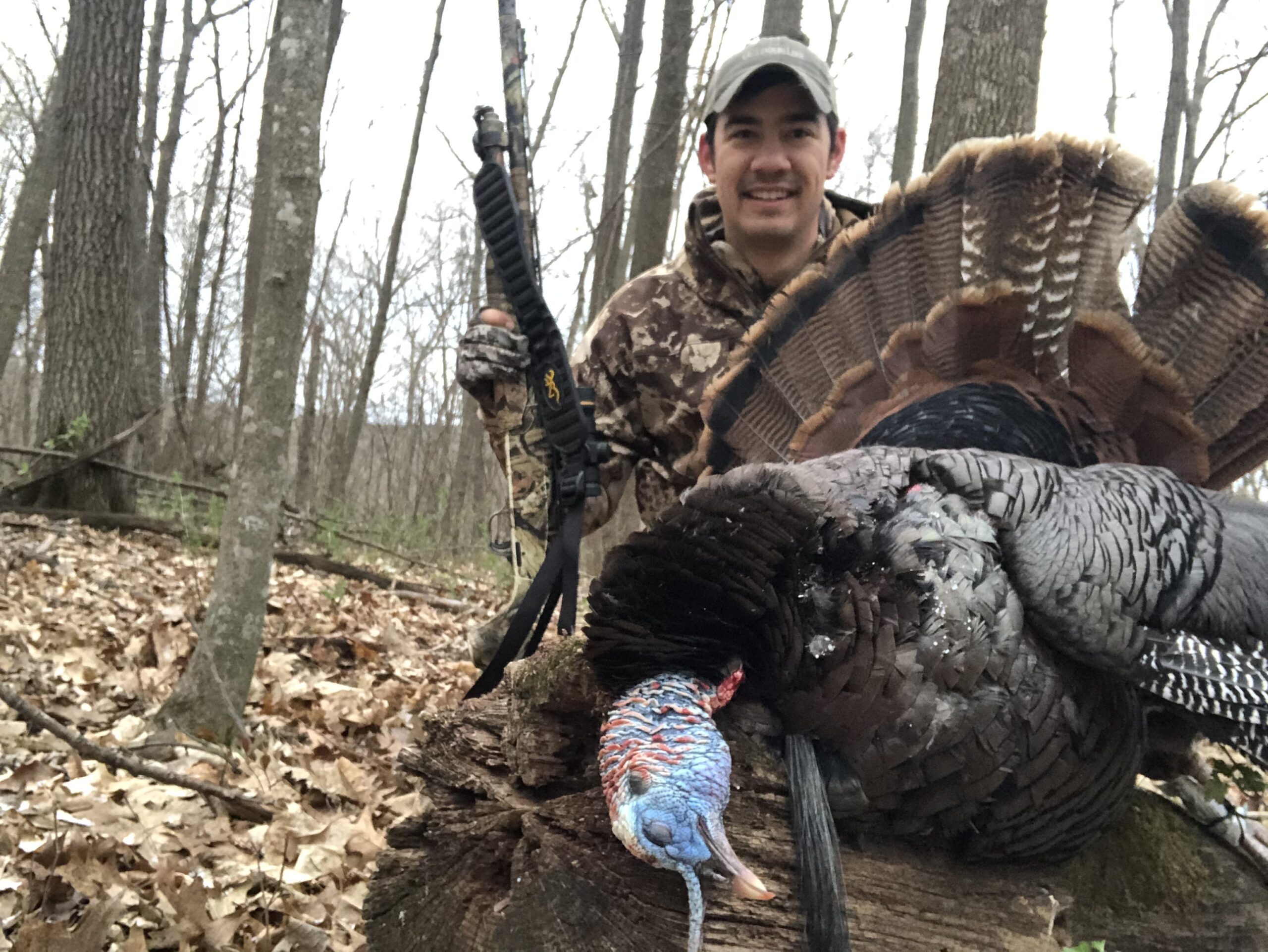
One of the Ninja Ghost’s strengths is its simplicity.
“It’s a straight-forward three-reed call with a small ghost-style cut in the middle of the top reed,” Robinson says. “The sound is crisp and not raspy (a lot of poor mouth callers struggle with overly raspy calls and end up sounding more like a slurring hen with a cough than a real bird). Most importantly, it kills turkeys. Last spring it brought seven gobblers to the gun,” Robinson says. Listen to the Ninja Ghost by clicking on the audio player below.
Best for Soft Yelps: Zink Z-Cutter
Key Features
- Cutter-style triple reed
- Standard size
- Relatively easy use
Pros
- Standard size fits most mouths
- Makes soft, realistic yelps
- Loose reed construction requires little air
Cons
- Not great for loud, long-range calling
After hunting turkeys for 32 years across North America and in his home state of Wisconsin, Brian Lovett pins this call as a staple in his turkey vest.
“The cutter style reed on the Zink Z-Cutter makes it easy to churn out the full range of turkey vocabulary,” Lovett says. “And the loose reed construction doesn’t require much air. If you have to climb a steep ridge and need to eek out a few soft yelps… If you’re out of breath, this isn’t the easiest thing to do. But, this mouth call lets you do it because it doesn’t require much air.”
“The Z-Cutter might be a step above a beginner call, but it should work well for most hunters. I can yelp clear, add rasp, cluck and cutt, cackle, cluck, and purr. If there is a con for this mouth call, it’s only that if I try and hammer on it, I start to lose sound quality.” Listen to the Z-Cutter by clicking on the audio player below.
Best Custom: Shane Simpson Hunting: Prodigy Elite
Key Features
- Thicker reeds than the original Prodigy line
- Mid-size tape
- Designed for soft and aggressive calling
- Combo “L” cut
Pros
- Different cuts for hunter-specific air channels
- Mid-size construction fits most mouths
- Wide vocal range
- Durable
Cons
- Not as accessible as other competitors
Outdoor Life contributor and fanatical turkey hunter, Josh Dahlke’s go-to mouth call is the Prodigy Elite made by Shane Simpson.
“I like Shane’s calls because they fit my mouth,” Dahlke says. “The frame, tape size, and the way that he cuts it seem to make this call a great medium-sized fit. And you can still work this call even if it doesn’t fit perfectly in your mouth.”
The reed tightness allows you to make a range of calls from medium to loud, which makes this call great for a variety of calling scenarios, like trying to pull in a turkey that’s close, but hung up behind brush. Or, getting the attention of that gobbler that’s a few ridges over on a windy day.
“These calls tend to last,” Dahlke says. “I’ve had others that fall apart way faster, and for the average turkey hunter, this call will last you an entire season. Out of all the calls I’ve experimented with, the overall size and design of Shane Simpson’s calls work best out of the box no matter your calling experience.”
The Prodigy Elite line offers mouth calls with L, R, and C cuts, which stand for left, right and center. These different cuts are designed to provide hunters with the best turkey mouth call that fits their air channels(The video below will help you determine which air channel you use).
Best for Long Distances: Quaker Boy Screamin’ Green Pro Triple
Key Features
- Three reed, no cut
- Premium latex
- Crisp, deep sounds
Pros
- Great rasp
- Natural sound
- Sized just right
Cons
- Reeds tend to stick more than competitors
- Not ideal for beginners
Native New Englander Bill Bailey has hunted turkeys for more than 30 years in Northeast and several Midwestern states. Bailey swears by Quaker Boy’s Screamin’ Green line of calls. While his go-to mouth call is the Pro Triple, he also likes the Old Nasty Hen.
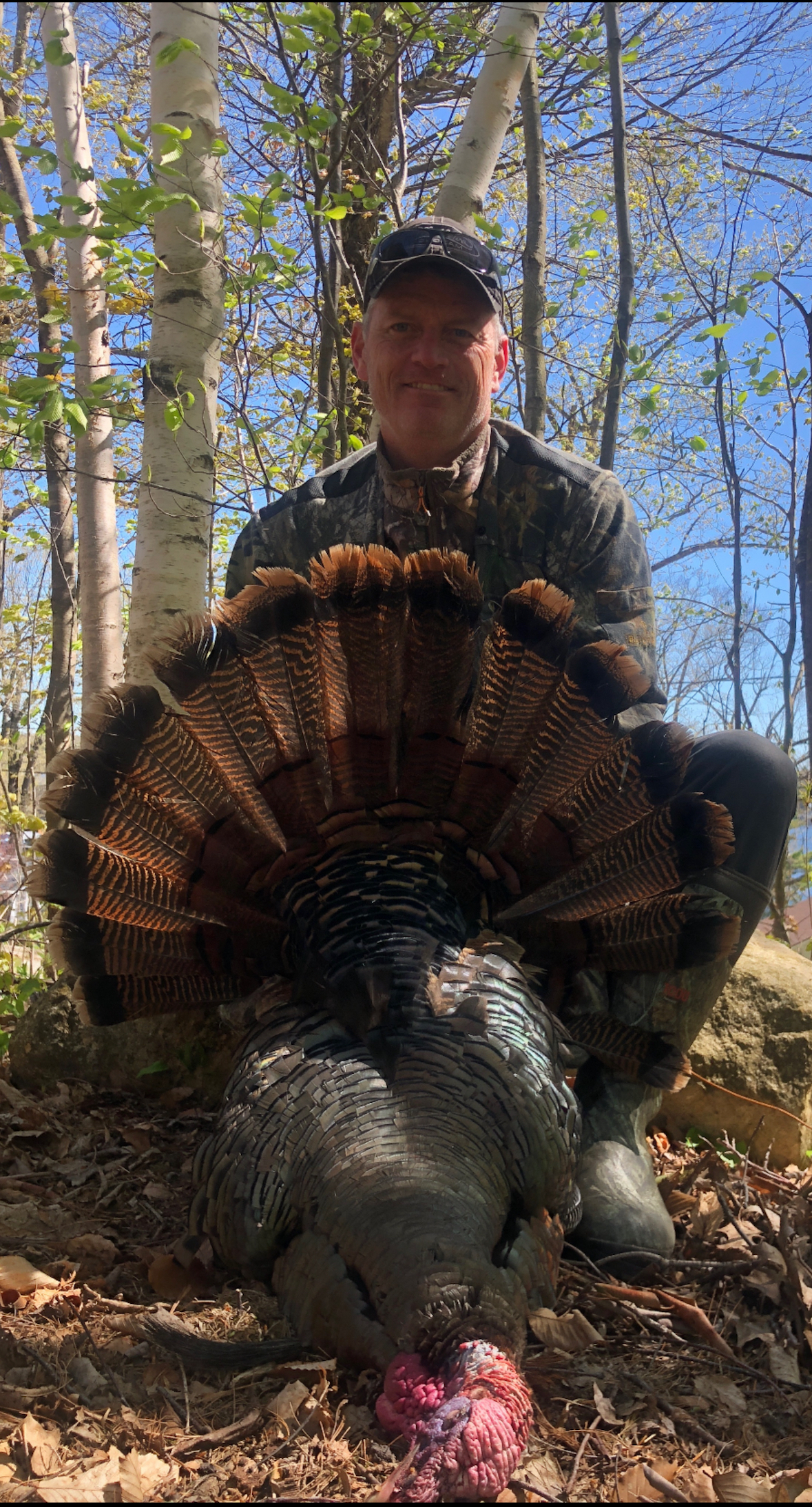
“The tape size, triple reeds, and rasp make this a great call,” Bailey says. “I like the raspiest call possible, like an old hen. Those qualities are important to me. Not to mention the fit. I pop it in, and it just feels natural. You don’t have to cut it, and I can run it right out of the package, which is why I keep returning to this call season after season. I’ve killed a lot of birds with this one.”
The Screamin’ Green line from Quaker Boy offers four different calls with various cuts and reeds, depending on your style and type of call that works best for you. Listen to the Screaming Green Pro Triple by clicking on the audio player below.
Best for Aggressive Calling: Strike Zone Trouble Maker
Key Features
- Moderate reed stretch
- Batwing cut
- Triple reed
Pros
- Easy for beginners
- Latex maintains its stretch
- Durable tape
- Great for yelping and cutting
Cons
- Might be too raspy for beginners
Long-time turkey hunter and calling expert, Matt Wettish keeps a few Trouble Makers in his vest every turkey season. Wettish says that one of his favorite things about this call is the quality.
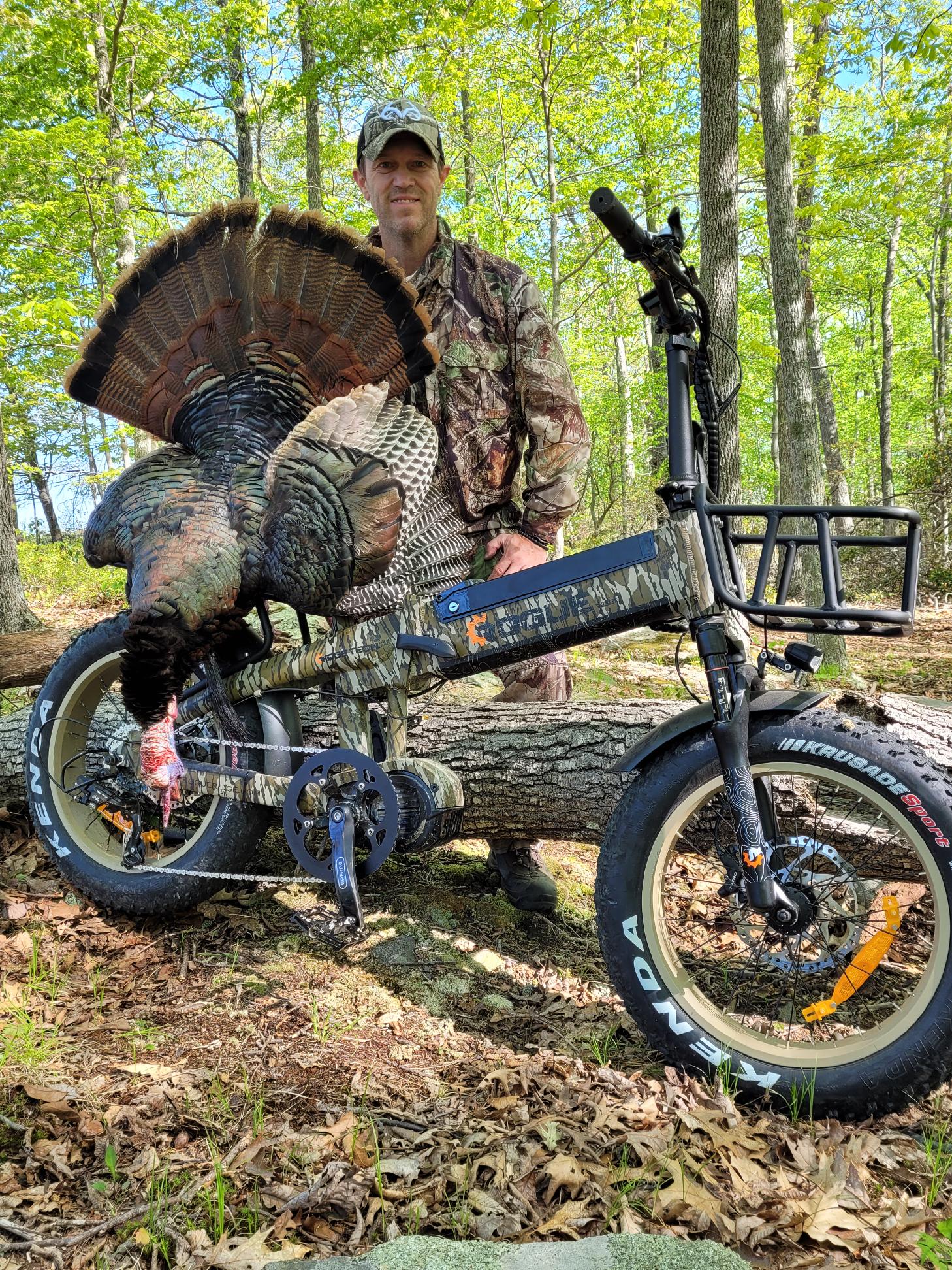
“I love the consistency of these calls,” he says, “Strike Zone is a small company and there’s subtle differences in the calls, which is great when you find one that works. I know that if I leave the Trouble Maker on the dash of my truck and fry the reeds, I can go buy another one without worrying if it’s going to sound different.”
“It’s also a versatile call. I can yelp, cutt, and cluck, and it’s easy to generate multiple turkey vocalizations,” he says. “I’m an aggressive caller. I’ve found that the call doesn’t wear out easily, the reeds don’t deteriorate, the tape doesn’t come undone. Not as quickly as other competitors I’ve tried.” Listen to the Trouble Maker by clicking on the audio player below.
Best for Cutting: Hook’s Custom 3-Reed Cutter
Key Features
- Three thin reeds
- Cutter style (right side)
- Mid-size tape
Pros
- Easy to run
- Crisp two-tone yelps
- Realistic
- Requires litte air
Cons
- Some might prefer less rasp
Turkey hunting legend Ray Eye has more than 50 years of experience calling longbeards all across the country, and he’s made numerous instructional videos on how to use a mouth call. He’s also the author of multiple turkey hunting books. In Eye’s opinion, the best turkey mouth call is the Hook’s Custom 3-Reed Cutter, which he’s used to call in countless birds while guiding other hunters and while hunting on his own.
“One of the main reasons I love this call is the double note,” he says. “The sound turns over so smoothly. It has a great clear first note and then it breaks into a more raspy call that’s more realistic than a lot of other calls out there…and as the name implies, with this cutter you can make some of the most realistic excited turkey sounds with ease. You can get loud or do the soft stuff. This is my go-to call when things get serious.”
In addition to cutting, Eye said it’s also one of the best turkey mouth calls for making gobbler yelps.
“When I’m fall turkey hunting, this call reproduces excellent gobbler sounds,” he says. “It’s great for challenging them and making those deep, raspy gobbler yelps.” Listen to the Hook’s 3-Reed Cutter by clicking on the audio player below.
Most Versatile: Woodhaven Ninja Hammer
Key Features
- Three-reed design
- Mid-size
- Combo cut
Pros
- Versatility
- Heavy latex doesn’t wear out quickly
- Size fits most
Cons
- Probably not the best for beginners
You don’t have to look at The Hunting Public’s YouTube channel long to see that Aaron Warbritton kills his share of turkeys every year. In fact, there’s plenty of videos of Warbritton using this call and other Woodhaven mouth calls on heavily pressured birds on public lands. One thing Warbritton emphasized about the Ninja Hammer is how he can manipulate air flow to make multiple turkey sounds.
“The right side is open on the top reed, so I can keekee and cluck out of it, but I yelp out of the center, especially if I’m calling aggressively,” he says. “It’s got a good mixture of low to high rasp. I like to do a lot of cutting on the left side. It’s just a really versatile call. The way the call sits in my mouth works great, especially with how I push air across my pallet. I can make all these sounds on one call. If I have to cackle, I can use the same one instead of fumbling around with a ton of different calls.”
The Ninja hammer has a heavier latex, which Warbritton prefers because he says it runs better. If you’re a minimalist run-n-gunner, the versatile Ninja Hammer might be the only call you need when you hit the woods this spring.

Read Next: 25 Top Turkey Hunting Tips
Methodology
I interviewed expert turkey hunters to get their detailed information on the best turkey mouth calls. We judged calls based on usability, performance, and durability. These experts hunt all over the country, and their calls are tailored to specific hunting scenarios. I made sure to include a variety of calls that are designed for beginners, experts, and everyone in between.
You can’t try out a turkey mouth call before you buy it. So instead of sifting through multi packs of mouth calls, spitting out the ones that are too small, and inevitably gagging and half choking on those that are too big, you should see this review as a way to skip a lot of the trial and error. But not all of the trial and error. You’ll have to try a few turkey calls until you find one that sounds right when you blow it. Start with watching Shane Simpson’s video on identifying your primary air channel.
FAQs
The easiest turkey mouth call to use depends on the person and experience level. While a standard double-reed mouth call tends to be easier for beginners, this might not always be the case since everyone has a different mouth size and shape. If you’re just starting out, using a double-reed call that has a loose reed construction is probably going to be easiest to create sound and turkey vocalizations.
Assuming that you’ve hit the woods before daylight, the time you should start calling a turkey varies by situation. If you’ve roosted a bird the evening before and know exactly where it’ll be the next morning, a few soft tree yelps are best once he makes the first gobble. I’m a firm believer in letting the gobbler make the first move, so once he thunders that first gobble, give a few soft tree yelps to get him interested. I apply this same rule if I’m setting up blind. However, if 30 minutes tick by beyond daylight and you haven’t heard a gobble, start with a locator call or a few soft yelps to see if a bird responds. If the woods are silent after those calls, it might be best to head to another spot.
Any time you can be. But typically, turkey hunts start before daylight. If I’ve roosted a bird, I like to be in my spot 30 minutes before daylight or gobbling time. I definitely suggest this if you use a blind and decoys so you’re not fumbling around with equipment during the first gobble.
Final Thoughts
Even with this list as a starting point, you’ll probably have to go through a few different calls before landing the best turkey mouth call for you. Of course, if you know which size call works best for your mouth and air channel, you’ve eliminated most of the guess work. Above all, you want a call that’s easy to use, sounds realistic, and can handle a season’s worth of calling.
Every call works differently for every hunter. One call that sounds like a dying turkey in your mouth might sound like the real thing for your buddy. That’s why it’s important to try a few different calls with the expectation that only one or two will sound right. Thankfully, mouth calls are significantly cheaper than other types of turkey calls, and I’ve never lost sleep over a six-dollar mouth call that didn’t pan out. And remember: Learning how to blow a turkey mouth call is like learning how to play an instrument—it takes practice.
Best for Beginners: Woodhaven Ninja Ghost
Best for Soft Yelps: Zink Z-Cutter
Best Custom: Shane Simpson Hunting: Prodigy Elite
Best for Long Distances: Quaker Boy: Screamin’ Green Pro Triple
Best for Aggressive Calling: Strike Zone Trouble Maker
Best Intermediate Call: Tom Teasers Butt Naked Hen
Best for Cutting: Hook’s Custom Calls: 3-reed Cutter
Best Versatile Call: Woodhaven Ninja Hammer
